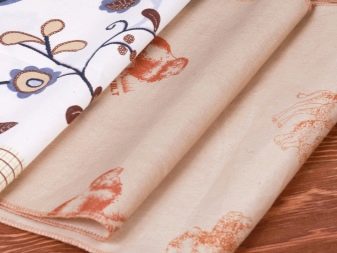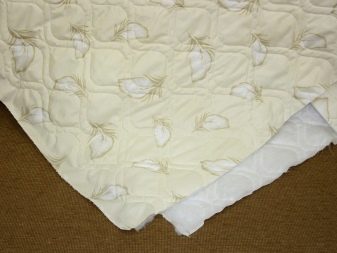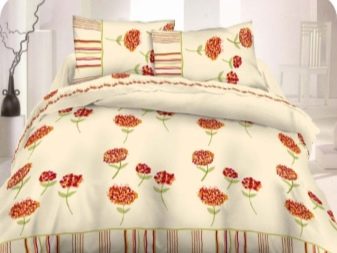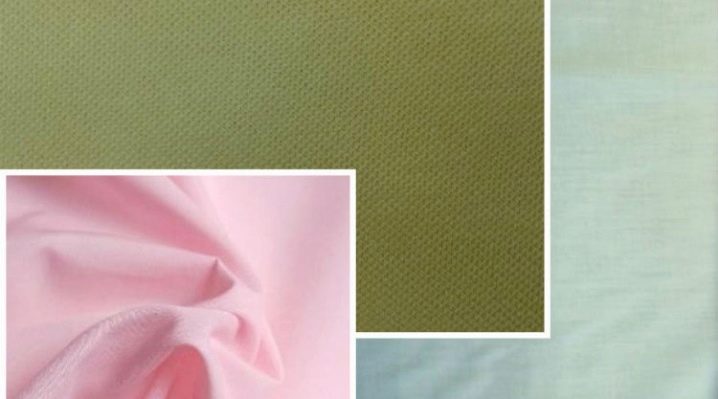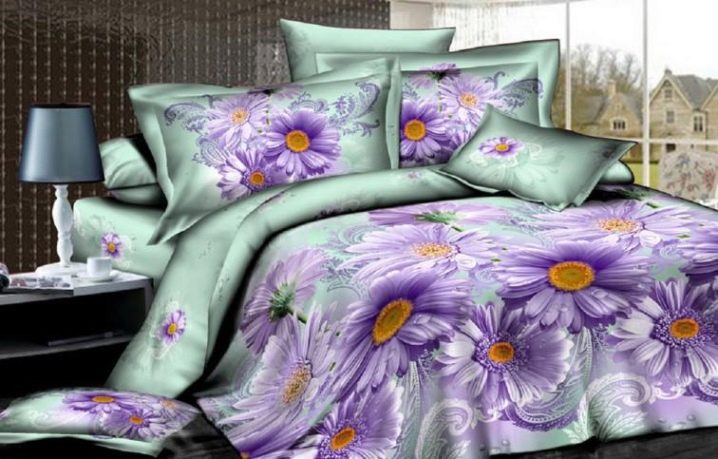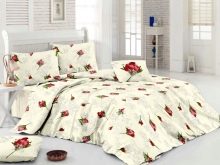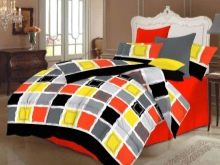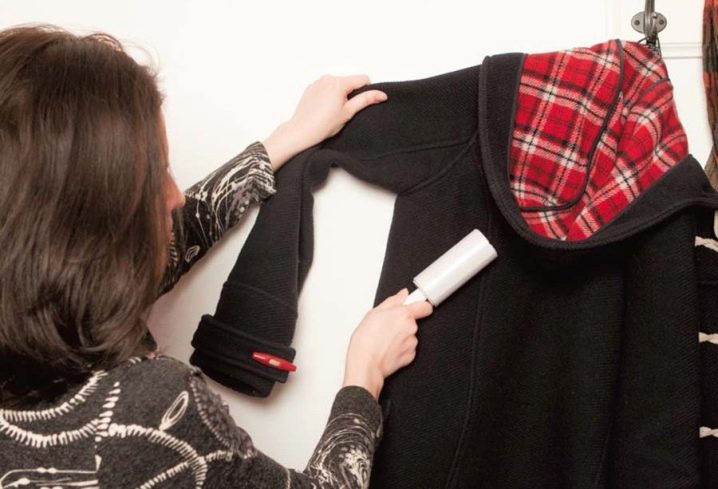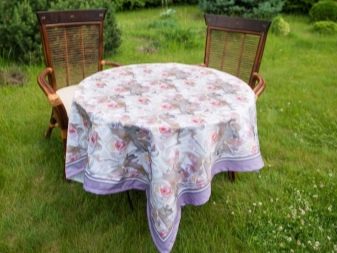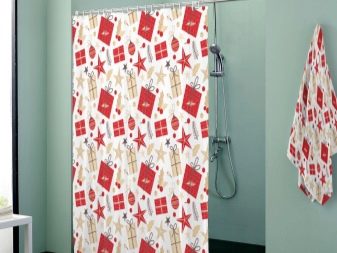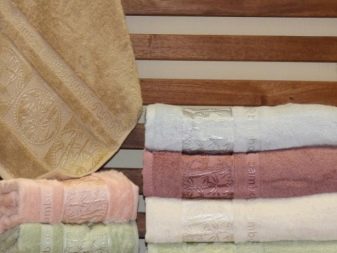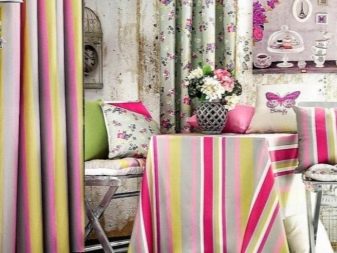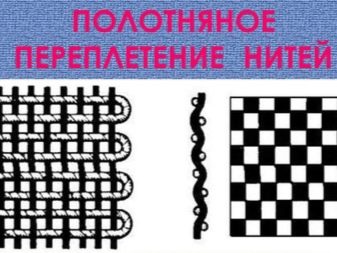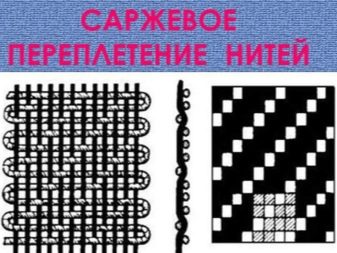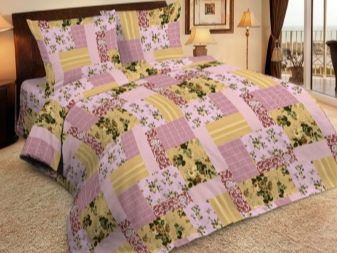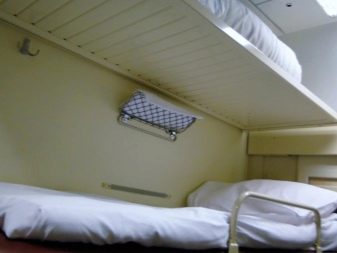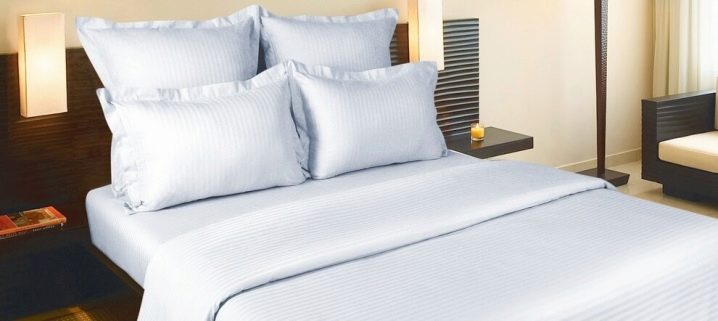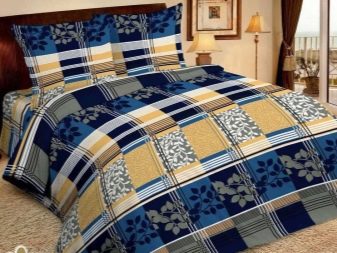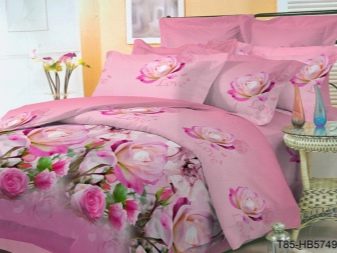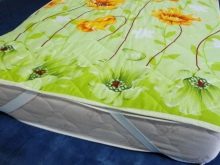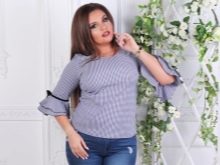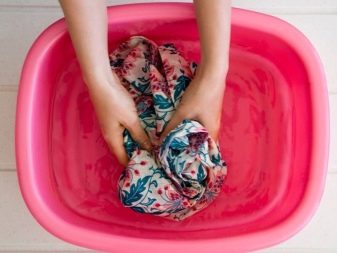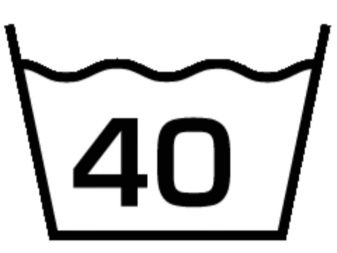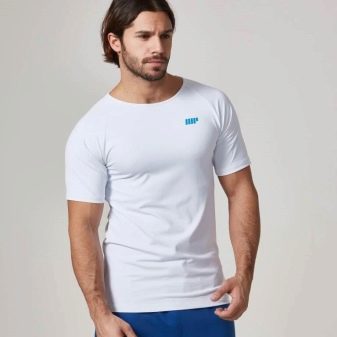Polycotton: features, composition and scope
Polycotton is one of the most popular types of blended fabrics and is widely used for sewing bed linen and home textiles.
What it is?
Polycotton is called the modern combined fabric, consisting of synthetic and natural threads, which was invented in the middle of the last century in the USA and quickly gained popularity all over the world.
By mixing cotton and polyester, technologists managed to get a hygroscopic, breathable and durable material that absorbed the best performance properties of both fibers. The presence of synthetics led to the creation of bright colors during dyeing, and the presence of cotton threads made the fabric breathable and pleasant to the touch. In addition, due to polyester material is not subject to shrinkage and is much cheaper than fabrics made of natural cotton.
The presence of synthetic fibers does not allow the fabric to wrinkle, and natural fibers guarantee its hypoallergenic and environmental friendliness.
Fabric structure
The proportion of cotton and polyester in polycotton is not constant. There are four types of material, each of which has its own characteristics and cost. So, the fabric, consisting of 65% cotton and 35% synthetic, is the most expensive. This is due to the very high content of natural fibers, which makes the material as close as possible to natural cotton fabrics.
Following type is represented by fabrics with an equal ratio of polyester and cotton. They are characterized by good ventilation and high strength. It costs a little cheaper than the previous type, but it is difficult to call it a budget option.
The third and fourth types of fabrics are among the inexpensive materials, which is why they are especially popular among consumers. One of them contains 35% cotton vs. 65% synthetics and has a high wear resistance and fairly good breathability.
The second is the most budget type of materials and includes in its composition only 15% of natural threads and 85% - artificial. The material is easily washed and has a high resistance of paints.The durability of products made from such fabric will be slightly lower than that of products with 100% synthetic content, however, in comparison with the previous types, this canvas is considered the most durable.
Advantages and disadvantages
Stable consumer demand and the high popularity of the polycotton are due to a number of important advantages of this material.
- High durability and long service life of fabric favorably distinguish it from completely natural cloths.
- Brightness of color and durability of coloring material can be used for the manufacture of clothing and bedspreads.
- The low crushability of the fabric allows polycotton products to maintain a neat appearance. This property of the material is especially valuable in the production of sportswear and bedding, which, after washing, can not be ironed.
- Things from polycotton do not shrink and are not deformed by regular washing in a typewriter. In addition, the products are easily washed and dry very quickly.
- High hygiene of polycotton things is due to the excellent hygroscopicity of the material and its ability to freely pass air.
- The comfortable cost of mixed fabric favorably distinguishes it from many natural canvases.
However, along with obvious advantages, the Polycotton has some disadvantages. Basically, their presence is explained by the presence of synthetic fibers, as the quantitative content of which increases, the defects become more pronounced. So, Large amounts of polyester can cause allergic skin reactions.
In addition, after frequent washes on the fabric, the pellets are formed, which, of course, does not add to her aesthetics and attractiveness.
Polycotton items are prone to the accumulation of static electricity, and, as a result, attract dust and fine mechanical debris (threads, hairs and hair).
The above disadvantages are often the reason for not buying polycotton bed linen. Despite the difference in price, consumers more often prefer 100% cotton sheeting, which does not electrify, breathes, is completely hygroscopic and does not cause allergic reactions.
However, if you choose products with a lower proportion of polyester, not exceeding 50% of the total volume, then you may not notice a particular difference between polycotton and natural fabric.
This is due to the fact that cotton, which is present even in a low percentage, is capable of providing high hygienic properties of the material. Fabrics with a high content of synthetics should be used for sewing covers, kitchen towels, tablecloths and curtains.
Kinds
Polycotton is classified according to several criteria, the most important of which is the type of weave.
According to this criterion, fabrics are divided into three types.
- Plain weaving It is a classic version of the arrangement of threads, in which the warp and weft are connected alternately. The result is a smooth double-sided fabric.
- Material with twill type of weaving it is presented by cloths in which on each thread of a duck there are 2-3 threads of a basis. Due to this arrangement of the threads, it is possible to achieve a shift by one thread and to form diagonal hems on the fabric.
- Satin-weave fabric it is spun using a technology similar to twill weaving, with the only difference that one weft thread covers two to three, and four threads of the base at once.As a result, the step shifts to two or more threads, thus forming a canvas with a smooth face and a slightly rough inside.
The next criterion by which polycotton is distinguished is the type of staining. On this basis canvases are divided into bleached and dyed. The first ones are produced at the weaving factory in the city of Ivanovo and are distinguished by their pure white color. Bed linen, sewn from bleached polycotton, is widely used in the hotel and resort business.
The plain-colored canvases have a deep uniform color and are very much in demand in the production of bedding sets for the home.
Where is used?
The use of polycotton is wide enough. Plain or one-colored cloth used for sewing bedding, such as mattress covers, pillowcases, bedticks, sheets and duvet covers. Bleached fabric is indispensable in the manufacture of orders for tailoring of bed linen for hotels, hospitals, sanatoriums and passenger long-distance trains.
Due to the presence in the composition of polyester yarns such underwear is easily bleached and well withstands the thermal anti-bacterial treatment necessary for this category of laundry.
Multi-colored cloths are also actively used for sewing bed linen and home textiles and are considered the most sought-after product group in this segment. Polycotton responds well to quilting. This is due to the presence of synthetic threads that prevent the formation of large holes from the needle during quilting.
Quilted material is very popular and indispensable when sewing covers, blankets and mattresses.
However, in the independent production of bedding or home textiles, it is necessary to follow certain rules for the use of one or another type of polycotton.
Cloths, including 50% synthetic, are not recommended for the manufacture of children's sets. This is due to the low hygroscopicity and poor ventilation of the material.
But curtains, mattress, tablecloths, napkins and kitchen aprons, sewn from such fabric, will be characterized by increased resistance to pollution, long service life and the ability to quickly wash out. And vice versa - fabrics with a high content of cotton will be an ideal option for the manufacture of shirts, blouses, sportswear, gowns and children's bedding sets.Such products will not prevent the removal of moisture from the body and allow it to breathe.
Care instructions
Despite the fact that polycotton products are absolutely not demanding to care, some rules for handling them must be observed. So, before using the new laundry, it is recommended to rinse it in cool water, and all further washing should be done in water with a temperature not higher than 40 degrees.
Dyed fabrics are not recommended to be bleached with chlorine-containing agents, otherwise there is a risk of loss of color and loss of product attractiveness.
Spin things should be done at low speeds, and it is recommended to dry the polycotton away from heating appliances and direct sunlight. Before drying, the product should be well shaken and straightened - this will allow you to do without ironing and give the fabric a neat appearance. If the need to stroke the thing still arose, the iron switch should be set to "silk".
Reviews
In general, consumers respond well to polycotton. It is noted low in comparison with natural fabrics, the cost and the ability to do without ironing.Athletes note the usability of T-shirts with a high content of synthetics. During serious training sessions, cotton clothing, although it absorbs sweat quickly, remains wet for a long time.
Synthetic, on the contrary, dries quickly and does not give the athlete an unpleasant feeling of wet clothes after the end of training or during breaks in classes.
Attention is also drawn to the good washing result. If cotton products often require bleaching, and sometimes additional soaking, fabrics with a high content of synthetics are washed instantly. Among the disadvantages are poor ventilation and the formation of pellets. And not one product is insured from their appearance, no matter how delicate it is erased. Over time, even the highest quality things roll.
However, despite some shortcomings, the polycotton is a very high quality and popular modern material.
The fact that such a polycotton, see the next video.


